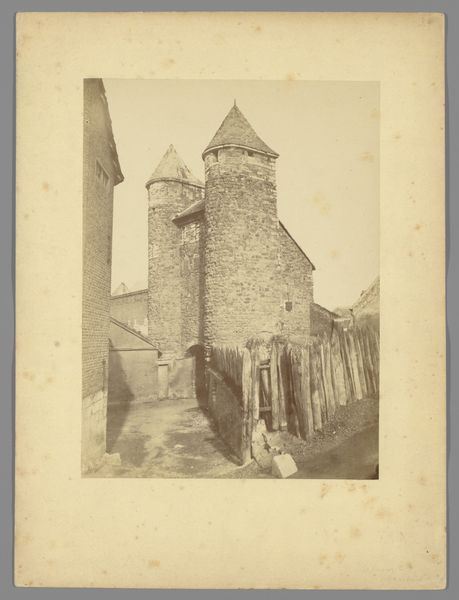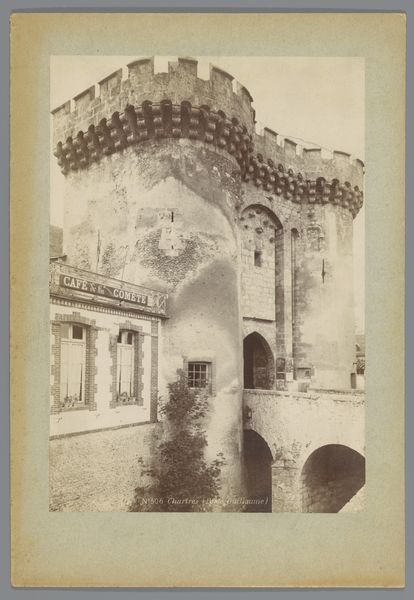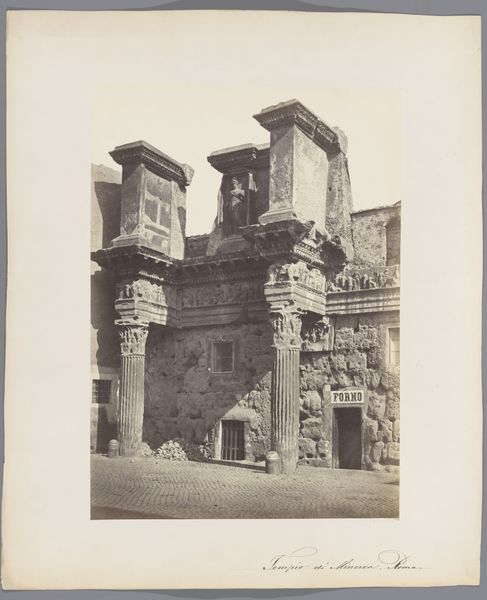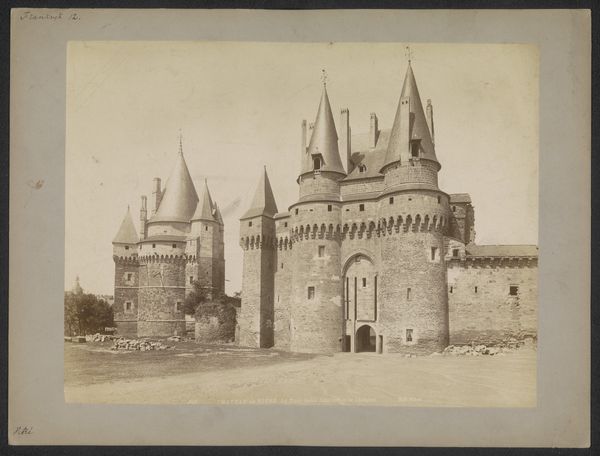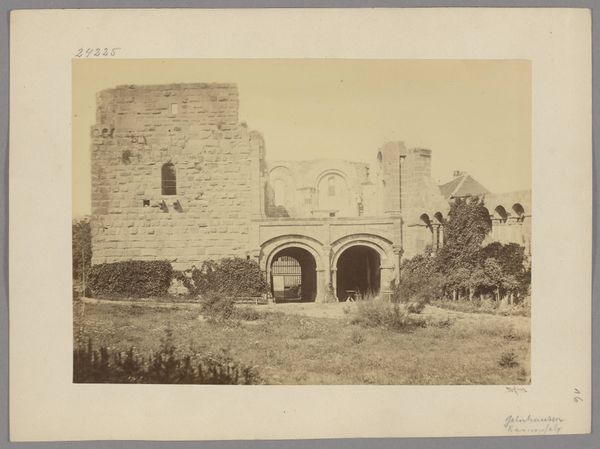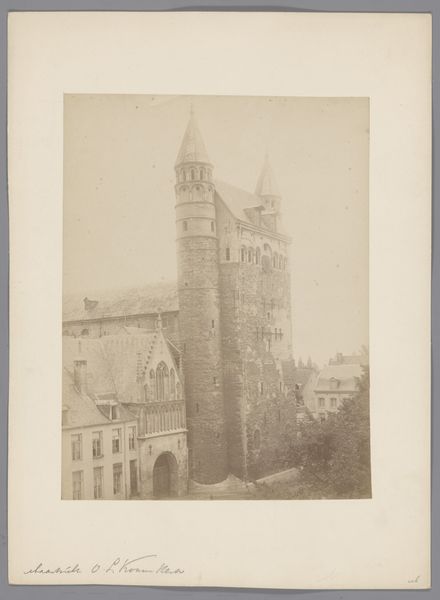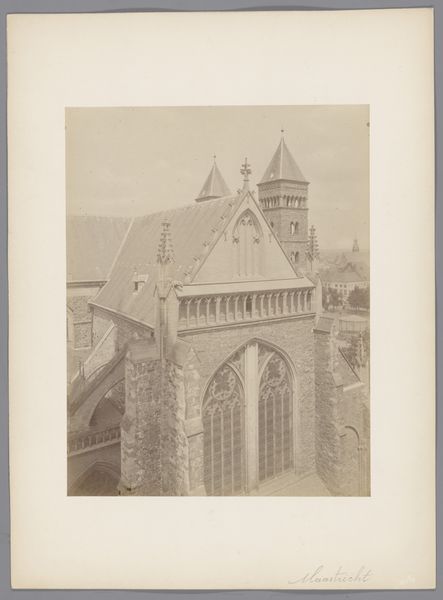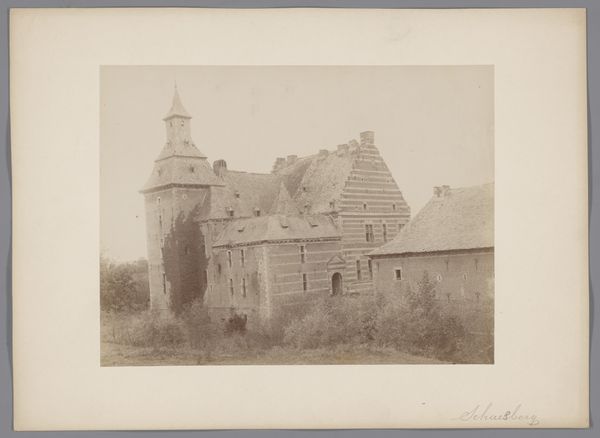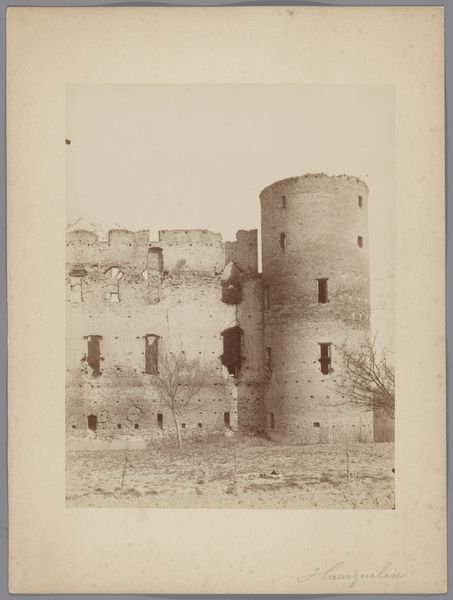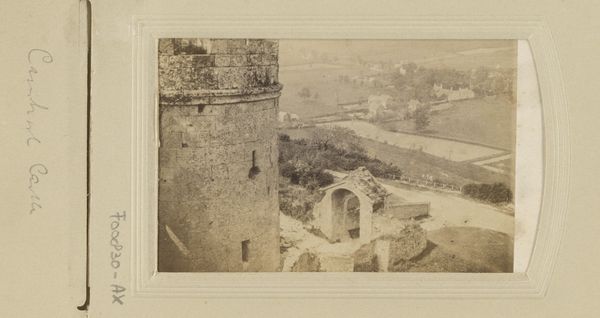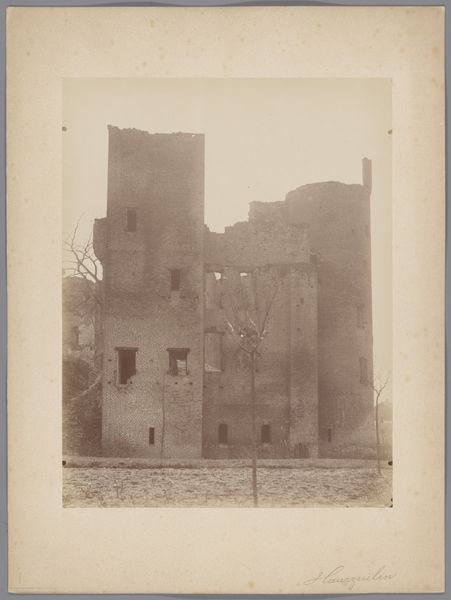
photography, albumen-print
#
landscape
#
photography
#
cityscape
#
watercolor
#
albumen-print
Dimensions: height 355 mm, width 268 mm
Copyright: Rijks Museum: Open Domain
Editor: So, this albumen print is a view of Carcassonne, a French fortress, sometime between 1850 and 1900. It's so sepia-toned, and there are all these towers and walls... it gives me a sense of enduring power, I suppose. What significance do you see in the architecture? Curator: The architecture itself becomes a symbol, doesn't it? Carcassonne, rebuilt and restored in the 19th century, speaks volumes about France's relationship to its medieval past. Look at those pointed roofs, those crenellations. What do they evoke for you? Editor: Knights? Fairy tales? Defense, definitely defense. Curator: Precisely. These features are a visual shorthand, tapping into our collective understanding of castles, power, and the romanticized Middle Ages. This image isn't simply documenting a place; it's invoking a specific emotional response, a cultural memory. This photograph functions as a symbol of French identity. Does that resonate with you? Editor: Yes, especially knowing when it was taken - the mid to late 19th century. It’s like they were trying to visually reinforce some grand narrative of their history using literal, concrete images. Curator: Indeed. Consider also the material—an albumen print. Its inherent sepia tones further solidify the image's connection to a bygone era, enhancing the nostalgic and perhaps even nationalistic sentiment the photograph carries. And isn’t the very act of photographing, of capturing this fortress, a way of possessing its symbolic power? Editor: I never considered how much the printing process could be part of the meaning, or how the act of documenting it becomes a type of ownership. I'll definitely look at photography differently. Curator: Excellent. Paying attention to those layers of symbolism adds so much to our experience.
Comments
No comments
Be the first to comment and join the conversation on the ultimate creative platform.
